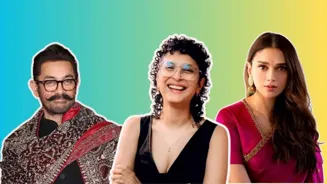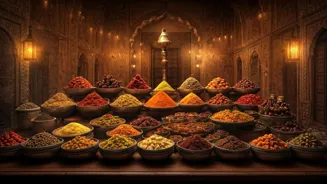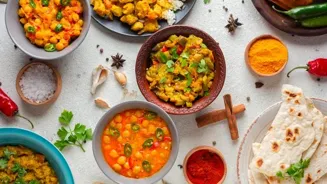Not everyone needs a spotlight to shine. Some people carry a quiet gravity — they speak softly but say a lot, walk steadily but cover miles. Kiran Rao
is one of those rare personalities in Indian cinema. Known to many as Aamir Khan’s former wife, she is so much more than just a chapter in someone else’s biography. Rao has spent decades crafting her own narrative — one that blends artistic curiosity with thoughtful storytelling, all while staying far away from industry noise or box office pressures. But here’s a lesser-known twist in her already fascinating tale: Kiran Rao was born into a royal family. Yes, the filmmaker who made a delicate debut with Dhobi Ghat descends from one of Telangana’s erstwhile princely states. Her lineage is rich with diplomats, publishers, musicians — and it even connects her to another leading lady of Bollywood. There’s more to Rao than meets the eye, and her story deserves to be told in full, starting from the beginning.
Rooted in Culture, Raised with Curiosity
Kiran Rao was born on 7 November 1973 in Hyderabad, but her childhood played out in Kolkata — a city steeped in literature, cinema and intellectual traditions. She studied at Loreto House before moving to La Martiniere for Girls, both top-tier schools that offered a world of exposure. Bengali quickly became second nature to her, and so did a love for films by masters like Satyajit Ray and Ritwik Ghatak. Their influence shows in the kind of cinema Rao would later go on to create: Sensitive, layered, and driven by emotion rather than spectacle.
Her college years took her to Mumbai’s Sophia College, where she studied arts. From there, she headed to Delhi to pursue a master's degree in mass communication at Jamia Millia Islamia — a pivotal moment, as it solidified her decision to pursue filmmaking seriously. But long before she touched a camera or wrote her first script, Rao’s world was already shaped by storytelling in another form — through the legacy of her grandfather.
The Hidden Heiress: Royal Ties to Wanaparthy
Few people outside her close circles are aware that Kiran Rao is the granddaughter of the late J. Rameshwar Rao — the last titular Raja of Wanaparthy. This princely estate, which now lies in Telangana, was once one of the most influential under the rule of the Nizam of Hyderabad. Her grandfather was not a figurehead. Educated and progressive, he joined the Indian Foreign Service, served as a diplomat, and later founded Orient Longman (today’s Orient Blackswan), a publishing house that remains a cornerstone of academic publishing in India.
Though India abolished royal entitlements in the 1970s, the family retained its commitment to cultural and educational causes. Rameshwar Rao’s influence went far beyond titles. He was a bridge between tradition and modernity, and his values clearly trickled down the generations.
A Family of Artists, Academics and Actors
The royal bloodline didn’t just pass down property — it passed down talent. When J. Rameshwar Rao died in 1998, he was survived by his wife Shanta (a passionate educationist and founder of the Vidya Narayana School), a son (Kiran’s father), and three daughters. Among them was Vidya Rao, a celebrated Hindustani vocalist known for her haunting thumris. Vidya married Ehsaan Hydari, a scion of the Tyabji family — one of the most illustrious Muslim families in Indian history.
Their daughter is none other than Aditi Rao Hydari, an actor known for her classical beauty and graceful performances. Yes, that makes Aditi and Kiran first cousins — both descended from two powerful, culturally rich bloodlines that combine royalty with artistry. While Aditi embraces her heritage through her roles on screen, Kiran Rao has chosen to express hers from behind the camera.
Films Over Fame: The Rao Way
Kiran Rao has never chased celebrity. Her films don’t scream for attention, but they leave lasting impressions. In 2011, she released Dhobi Ghat, a meditative drama about interconnected lives in Mumbai. It wasn’t a blockbuster in the conventional sense, but it was a festival darling — premiering at the Toronto International Film Festival and earning a spot on the BAFTA longlist.
More than a decade later, Rao gave us Laapataa Ladies, released on 1 March 2023. It is a comedy with heart — the story of two brides who get swapped on a train and embark on unexpected adventures of self-discovery. It’s based on an idea by Biplab Goswami, with dialogues and screenplay penned by Sneha Desai and Divyanidhi Sharma. The film is produced by Aamir Khan Productions, showing that even post-divorce, Rao and Khan continue to support each other creatively and personally.
A Few Things You Might Not Know
- Rao became vegetarian while working on Lagaan and later adopted a vegan lifestyle. She supports animal welfare and is outspoken about ethical living.
- Before becoming a director, she worked behind the scenes on major films like Lagaan and Swades, learning the ropes as an assistant director.
- Her 2005 wedding to Aamir Khan was a quiet affair — a private beachside ceremony in Panchgani attended only by close family and friends.
- Her ancestral home, Wanaparthy Palace, still stands today and remains a site of historical interest in Telangana.
Not Just Royal — Remarkably Real
Kiran Rao doesn’t need to wear a crown to prove her worth. Her journey is one of quiet resilience, artistic conviction and a refusal to be boxed in. She could have rested comfortably in the glow of her surname or royal connections, but instead, she chose the long road — the one that involves hard work, personal evolution and bold creative choices.
From the marble corridors of a princely estate to the editing rooms of Mumbai’s film studios, her life is a testament to reinvention. She may come from royalty, but it’s her unwavering individuality that truly makes her stand tall.












